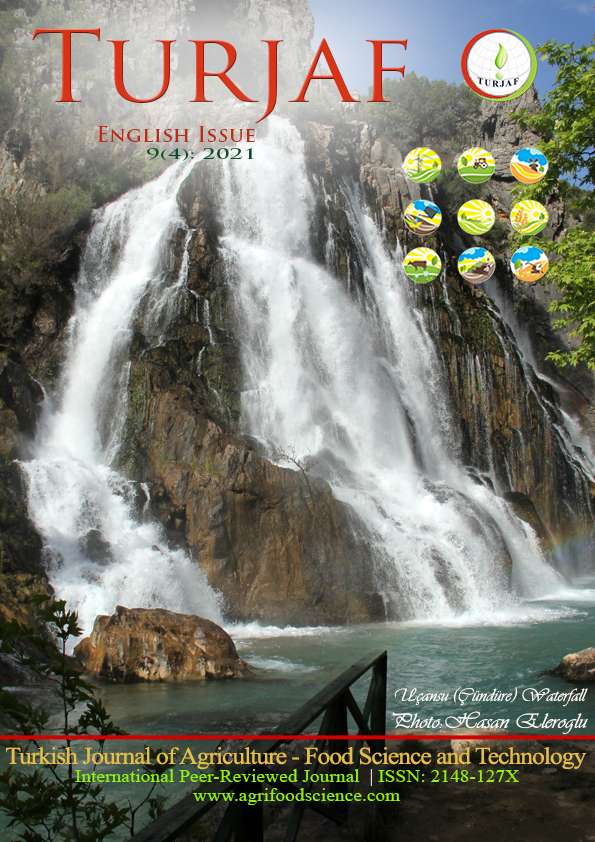Effect of Production System (Intensive and Free-Range), Slaughter Age and Gender on Nutrient and Fatty Acid Composition of Meat in Partridges (Alectoris chukar)
DOI:
https://doi.org/10.24925/turjaf.v9i4.745-754.4120Keywords:
Partridges, fatty acid, production systems, age, genderAbstract
This study was conducted to determine the effect of production system, slaughter age, and gender on the nutrient composition, fatty acids profile, and index values of breast and thigh meat in Alectoris chukar partridges. Partridges were slaughtered at 14, 16, and 18 weeks of age and skinless breast and thigh meat of male and female were used in the study (a total of 96 samples in 2 replicates). The production system affected only the crude fat level of the thigh meat in terms of nutrient composition and it was found higher in the intensive system compared to the free-range system. Age and gender did not significantly affect the composition of breast and thigh meat. In terms of fatty acid profile, erucic acid (C22:1n9) level in breast meat was higher in intensive system, while it was higher in thigh meat in free-range. While the percentage of docosahexaenoic acid (C22:6n3) increased with age in breast meat, it decreased in thigh meat with age. While eicosenoic acid (C20:1) percentage was higher in breast meat of male birds compared to females, only stearic acid (C18:0) was found to be higher in thigh meat. Saturated fatty acids (SFA), linolenic acid (n3), thrombogenic index (TI) and atherogenic index (AI) values were higher in thigh meat produced in free-range system, while polyunsaturated fatty acids (PUFA), total unsaturated fatty acids (UFA), linoleic acid (n6) and hypocholesterolaemic / hypercholesterolaemic ratio (h/H) were significantly higher in intensive system. While SFA and TI levels in thigh meat decreased with age, monounsaturated fatty acids (MUFA), UFA and oleic acid (n9) percentages increased. MUFA / SFA in thigh meat of females was higher than males, other indexes were found insignificant. The results shows that partridges had desirable fatty acid composition. Especially, the increase in MUFA and UFA values with age in thigh meat compared to breast indicates that thigh meat is enriched in terms of unsaturated fatty acids. However, the higher SFA and AI values obtained in the free-range system could be considered a negative outcome for alternative production systems that prioritize bird welfare and consumer demands.Downloads
Published
25.04.2021
How to Cite
Boz, M. A., Öz, F., Sarıca, M., & Yamak, U. S. (2021). Effect of Production System (Intensive and Free-Range), Slaughter Age and Gender on Nutrient and Fatty Acid Composition of Meat in Partridges (Alectoris chukar). Turkish Journal of Agriculture - Food Science and Technology, 9(4), 745–754. https://doi.org/10.24925/turjaf.v9i4.745-754.4120
Issue
Section
Research Paper
License
This work is licensed under a Creative Commons Attribution-NonCommercial 4.0 International License.









